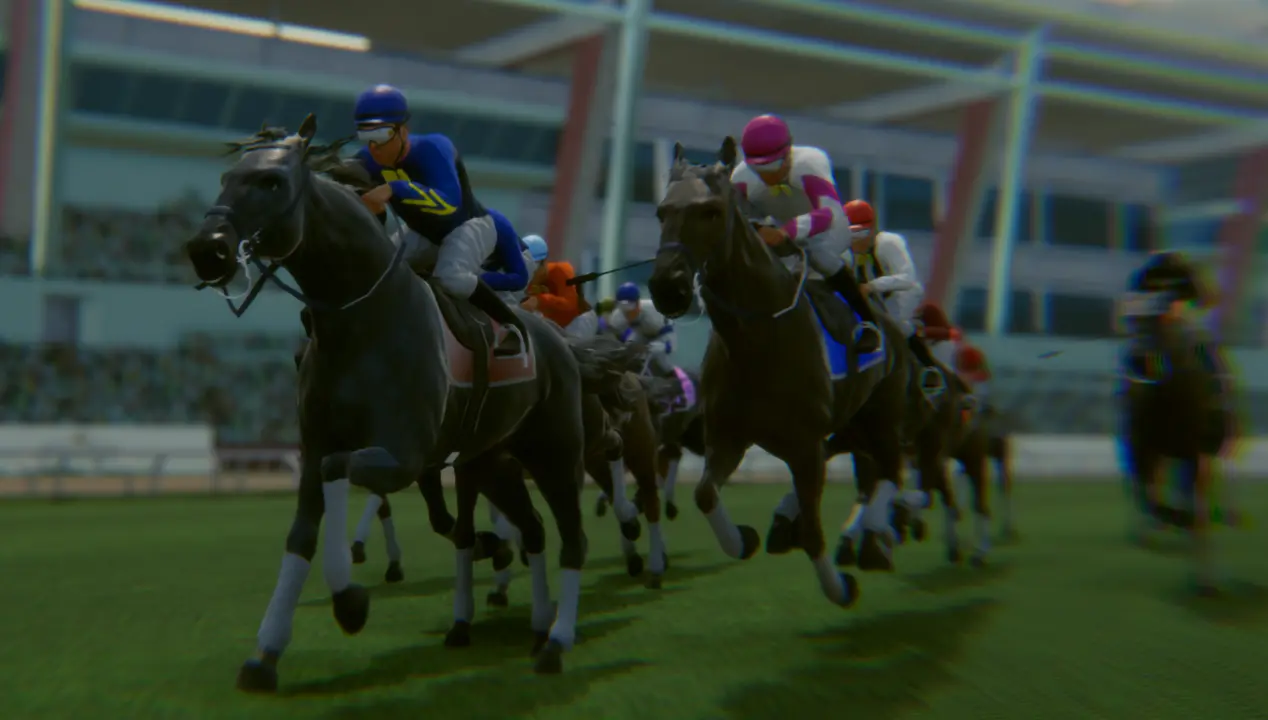Horses born in Season 26 and later will have a randomly determined age at which they become infertile, meaning their breeding window will vary—even though they will still pass away at 25.
It would be best if you also learned to breed so your stable is sustainable in the long term. The best horses in the game do not exist yet; they will be bred.
YOU can breed the next grand champion.
This guide will provide a high level on how to breed but will not go into the finest of details in part because there is a lot of strategy and skill to breeding and part of the fun is figuring that out. But to get a taste of some of the philosophy behind breeding, give this top player’s article a read.
Breeding: Important Notes
- Retirement and Breeding
- Horses born after Season 26 can retire starting at age 4 and will have a variable breeding age ranging from 18 to 25.
- Horses can start breeding only after they’re retired, which means they can no longer race.
- Horses can retire as early as age 3 but must retire by age 9.
- Horses can continue breeding until they pass away at age 25.
- Breeding Limits
- Studs can breed up to 18 times per season.
- Mares can breed once per season and keep the foal. They must pay a stud fee to breed.
- Breeding Window
- Breeding is only allowed from Day 8 to Day 21 of each season.
- New foals are born on the first day of each season and can start racing when they turn two, after two seasons.
- Breeding Variability
- Breeding the same stud and mare multiple times will produce unique foals each time.
- Marketplace Breeding
- The breeding fee is 50% of the total cost of the breed. So, if you’re breeding for 4,000 Derby, 2,000 Derby goes to the horse owner, and the other 2,000 Derby is the fee collected by Third Time Games. That fee helps fund freerolls and other community incentives.
- Horse Grades
- Horses range from grades B- to S+, with the best (and worst) horses being bred over time.
- There are variable minimum prices that horses can be bred for determined by their grade.
- Breeding Fees
- The game charges a 50% fee on all breedings.
- Stud Barn Price Lock
- All studs must be in the breeding barn BEFORE the breeding window kicks off. They cannot be added after it begins for that season’s breeding.
- Once you place a horse in the stud barn, there’s a 36-hour lock-in period before you can adjust the price. So, if you wait until the last minute to list a stud, you’ll only have a 12-hour window — between hour 36 and hour 48 — to make any pricing changes.
- Breeding Season Cooldown
- In the first 24 hours of the breeding season, there’s a 10-minute cooldown between breeding attempts with the same stud.
- Price Change Reset
- If you change the breeding price of a stud, the cooldown resets to 24 hours.
Breeding Fee Guidelines (By Stud Grade)
-
S- and Lower: 1,000 Derby
-
S: 3,000 Derby
-
S+ and SS-: 4,000 Derby
-
SS: 8,000 Derby
These are the standard stud fees based on grade. Keep in mind that 50% of the total fee goes to the horse owner, while the other 50% is collected by TTG to support freerolls and other incentives.
How to Breed a Stud
Step 1
Go to the “My Stable” tab at the left then select the stud you want to retire. Remember, he can no longer race once you retire him. Click on the retire horse button:
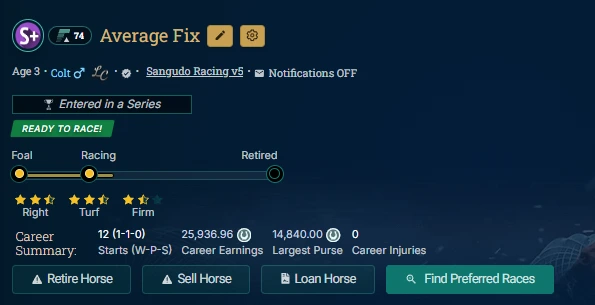
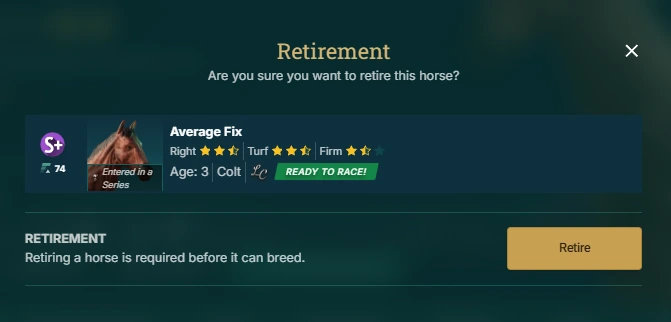
Step 2
Once you retire the stud, you then need to send him to the breeding barn. Click on the “Put Out To Stud” button:
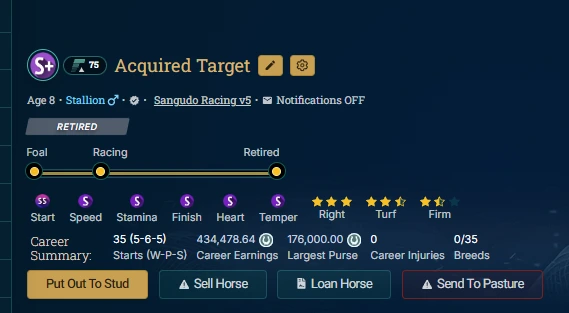
Step 3
Enter the price you want to charge per breeding session. If you’re not sure how much to charge, go to the “breeding” tab at the left and search for horses similar to yours in grade and stats and price yourself accordingly. Once you click the “Put to Stud” button, your stud will be available to breed with.
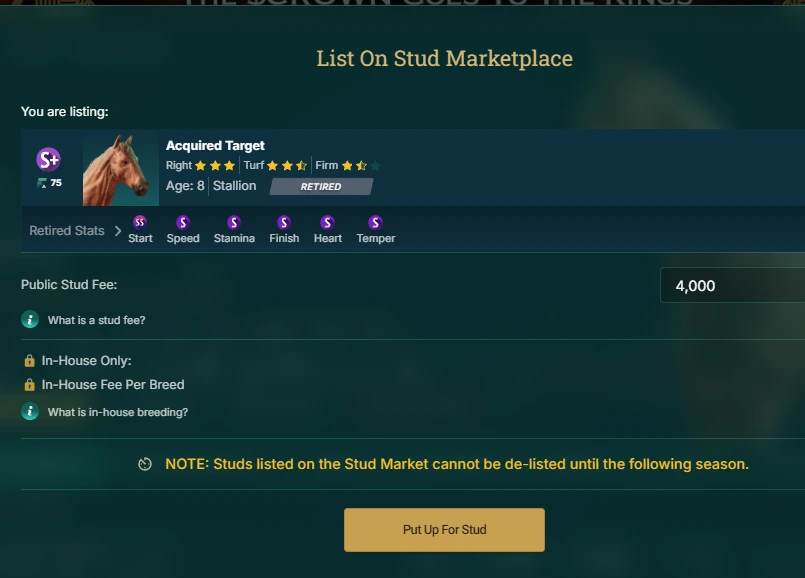
How To Breed a Mare
Step 1
Retire the filly just like you’d retire a stud. Again, they will never be able to race again.
Step 2
Go to “My Stable” and click on the Mare you want to breed. Pay specific attention to its grades, stats, and preferences.
Most of the time, you do not want to breed with a stud that is lower in grade or has worse stats. As you can see below, this mare is an S+grade RTF (Right/Turf/Firm preferences). So when we click “breed horse,” we’ll be looking to find a similar or hopefully better stud for a fair price.
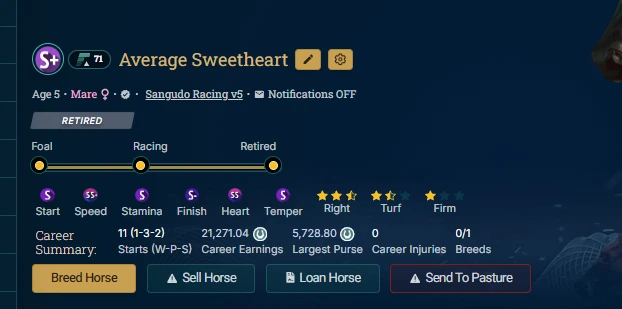
Step 3
You will quickly see which potential studs are inbred, meaning they share the same blood somewhere back to their great-grandparent line. It is generally believed to avoid inbreeding unless you are an exceptionally skilled player trying something unorthodox.
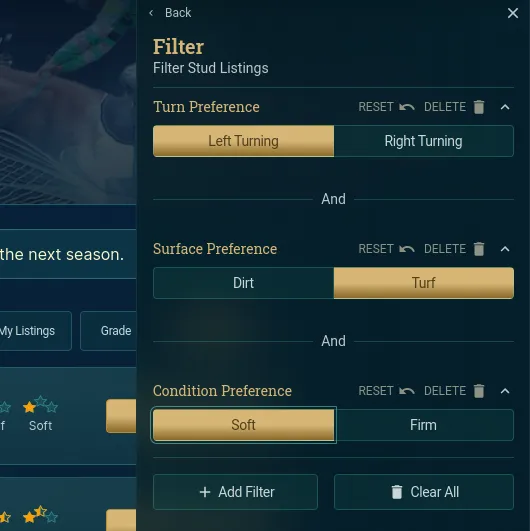
You may also find “quick filters” helpful when searching and saving preferences and traits.
Under filters, we have a variety of options to help us choose from. We can set the racing preferences (direction/surface/track condition), as well as other options to help make our search as complex as we want.
Of note is that the attributes filter is commonly used if you’re trying to match up underlying attributes on a potential stud.
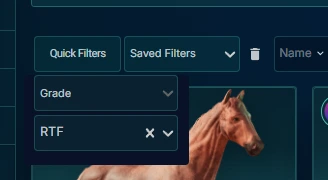
Step 4—Using all the filters available and potentially some of our terrific third-party sites, you can derive a breeding plan that works for you.
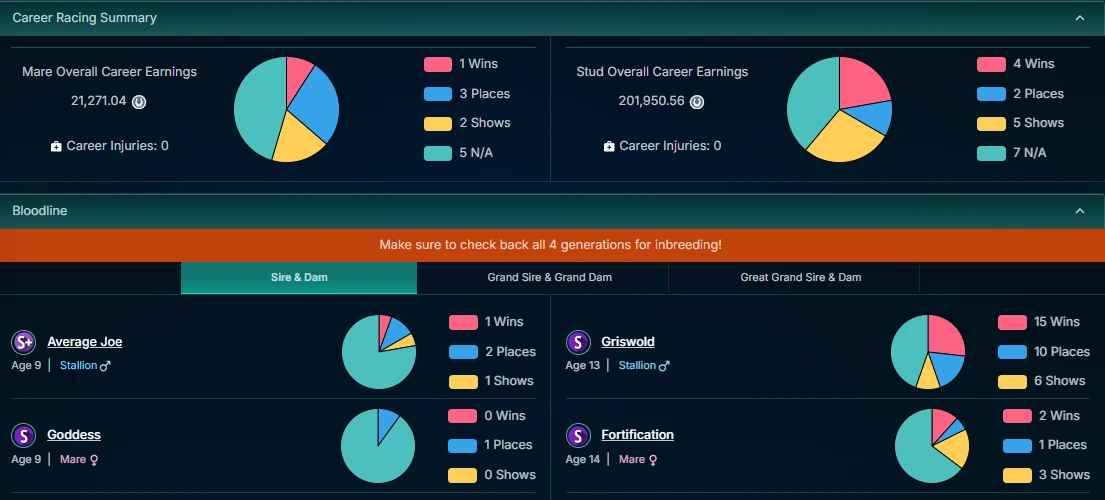
Once you’ve decided on a potential partner, you can review how they sync up.

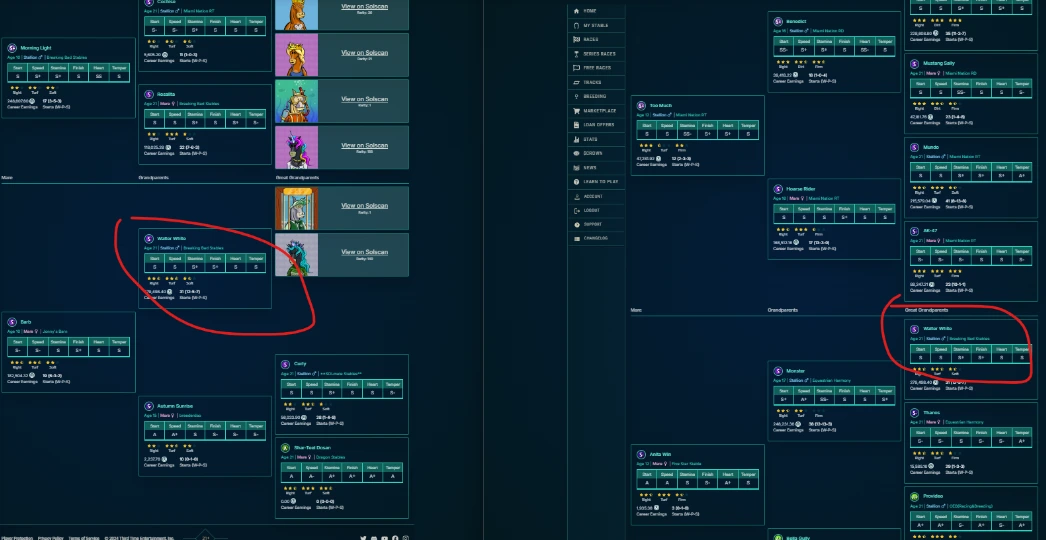
This is the check to make sure you’re clean. Purchasing a breeding report also includes an automated inbreeding check to prevent inbreeding.
Step 5
Once you’re comfortable, confirm the breed and that’s it! Your foal will be born at the start of next season.
As always, if you have any questions, please ask on the Photo Finish Live Discord server.
Breeding Tips
A. Many people focus on breeding “up” by choosing high-grade, well-rated studs at the lowest breeding price available. However, if you have lower-grade horses, you might get better results by racing them longer before retiring them. While racing more does not affect future breeding, it can impact the overall health of the horse. There is likely more financial upside to continuing racing than to retiring early.
B. Pay close attention to stars.
If you want to change an attribute (like making a horse perform better on firm rather than soft ground), the stud’s star rating should be stronger than the mare’s to succeed in the change.
C. To make a foal a better sprinter, look for a breeding partner that has even better ratings for start and speed.
For example, if your horse has an A in both, breeding it with a horse rated A+ in these areas can increase the chance of a faster foal. Think about what stats you want to improve to reach your goals.
D. Breeding reports can be helpful.
Click here to read more about breeding reports.
E. Watch for the Lineage Cup – horses bred at a premium get a chance to race in a high-stakes event during their lifetime.
Click here to learn more about the Lineage Cup.
F. Use a community member third-party tool that puts a color coder over the breeding report
